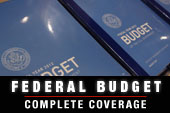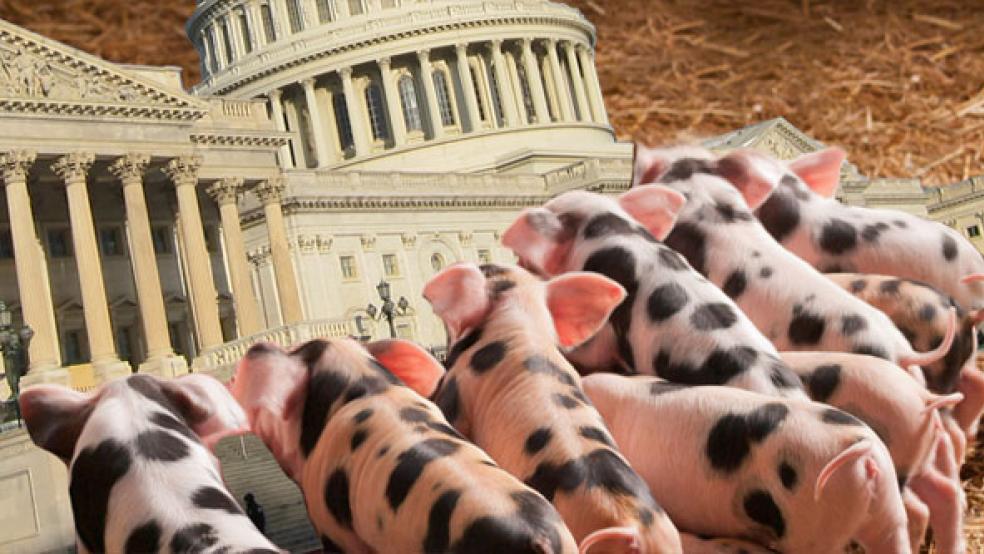The millions of dollars for projects unrelated to recovery from Hurricane Sandy included in the Sandy relief act is the latest in a long line of examples of politicians using emergency spending bills to fund pet projects.

“You’re at the end of the Congress, and there’s always an interest in attaching anything you can to bills that are going through the Capitol Hill station,” said Steve Ellis, vice president of Taxpayers for Common Sense. “This is one of the last trains going through the station.”
According to an analysis by Ellis, the Sandy emergency spending package includes $150 million for fishery disaster areas in Mississippi and Alaska; $20,000 for a new car for the Inspector General of the Justice Department; $10.8 billion for the Federal Transportation Administration; and cancellation of loans related to Hurricane Katrina. It also contains $4 million for repairs at the Kennedy Space Center and $3.3 million for the Plum Island Animal Disease Center.
Every disaster is an opportunity to lard a relief bill with pork. According to Citizens Against Government Waste, hurricane Katrina was also a golden opportunity to do an end-run around appropriations.
• $33.2 million for eight projects in the state of Senate Energy and Water Appropriations Subcommittee Ranking Member Harry Reid (D-Nev.), including: $25 million for rural Nevada; $1.5 million for Truckee Meadows; and $725,000 for Tahoe Regional Planning
• $16.8 million for seven projects in the state of Senate Energy and Water Appropriations Subcommittee member Robert Byrd (D-W.Va.), including: $2.5 million for the Greenbrier River Basin; $325,000 for the Parkersburg and Vienna Riverfront Park; and $150,000 for Island Creek at Logan
• $12.9 million for 11 projects in the state of Senate Energy and Water Appropriations Subcommittee Chairman Pete Domenici (R-N.M.), including: $5 million for central New Mexico; $250,000 for Santa Fe; and $180,000 for the Southwest Valley, Albuquerque
The Sandy emergency spending package also contains provisions that had previously been rejected or had not yet been considered by Congress. This includes a measure that alters how the federal government manages areas prone to flooding, a bill that was rejected by the House earlier this year. Also included is the Disaster Recovery Act of 2012, a bill that had yet to be considered by a Senate committee.
But Ellis said the pork contained in the Sandy emergency bill were modest compared to past bills. The 2007 Iraq supplemental spending package contained $21 billion in unrelated domestic spending, including $283 for the Milk Income Loss Contract Program and $400 million for rural schools. In 2000, an $11.2 billion spending plan for disaster relief in Kosovo and Columbia included $45 million to pay for a private jet for the commandant of the Coast Guard.
According to Ellis, these pet projects are part of the horse-trading involved in the political process: in order to gain broad support, priorities eliminated during the regular budget process are included in emergency spending bills. Craig Jennings, manager of federal spending and contracting policy at OMB Watch, said this is a symptom of a broken appropriations process.
“This is how Congress tries to get in their priorities. Ideally you want this all done through regular order and the normal appropriations process,” Jennings said. “There is no regular order anymore. We’ve been jumping from a debt ceiling crisis to government shutdown crisis to whatever crisis comes next. However it’s supposed to work isn’t working.” Jennings said partisan gridlock makes returning to a normal appropriations process impossible.
“As long as the Republicans are willing to use extreme measures like not passing regular appropriations this is going to continue,” he said. “There’s a political stalemate that extends into the budget process. It’s hard to get anything through Congress.”
According to Ellis, appropriation through emergency spending also robs the public of the chance to review the budget process as it occurs. It gives Congress the ability to budget without a public debate on priorities as the country sinks deeper into debt because of government spending.
“They don’t make it easy to find this stuff. They’ll designate it all emergency, and they’re going to move quickly,” he said. “You have to know what you’re looking for to see it.”
Ellis added that it is especially difficult to stand in the way of emergency spending packages for natural disasters.
“There is concern for the victims of Sandy,” he said. “If you’re in the way of that, you’re a mean nasty person who doesn’t care about disaster victims.”


